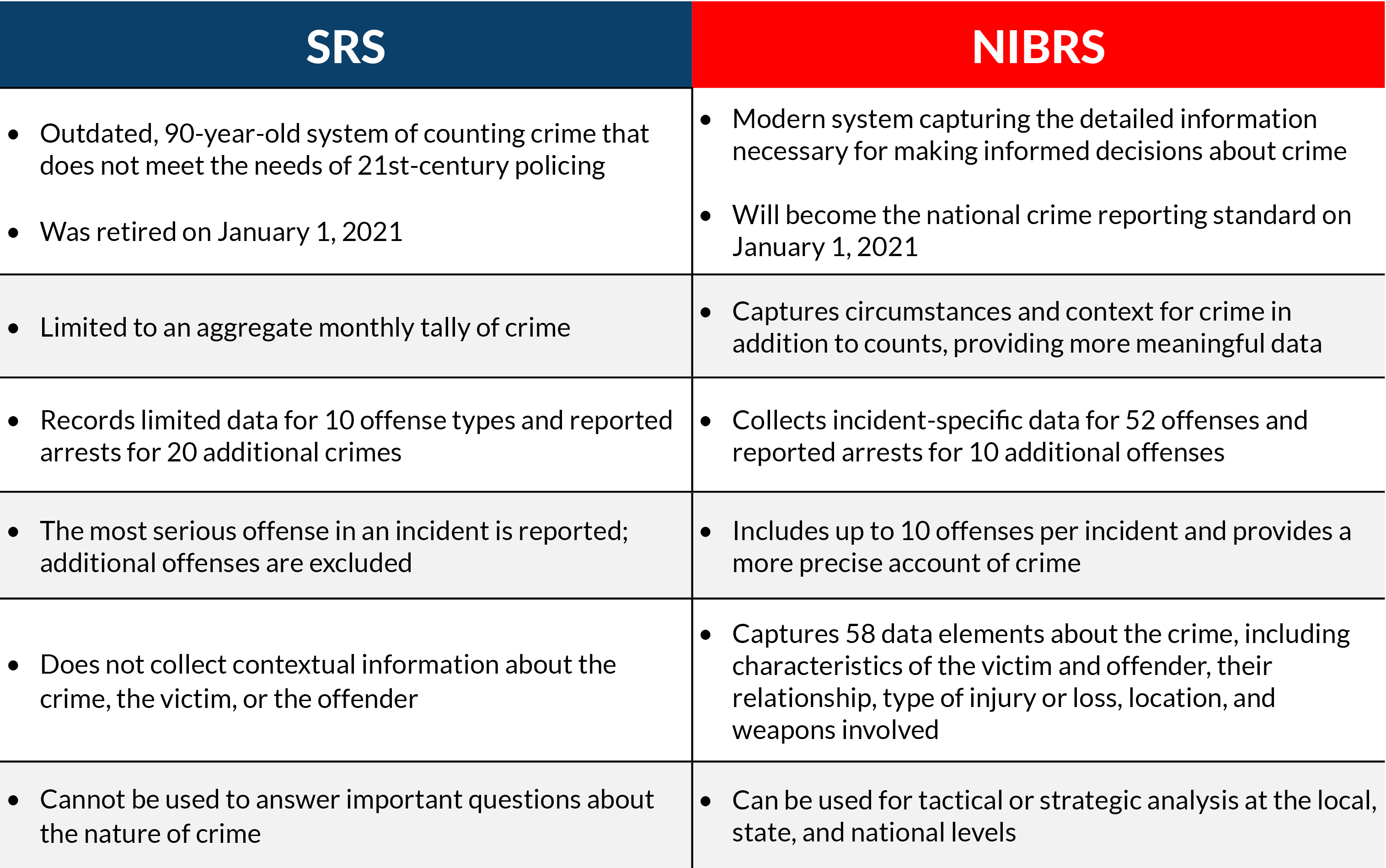Welcome to the Incident-Based Resource Center
The objective of this Resource Center is to facilitate the use of state Incident-Based Reporting Systems (IBRS) and the National Incident-Based Reporting System (NIBRS) by providing up-to-date and relevant information, resources, and tools for those with active IBR programs as well as those conducting research and analysis of IBR/NIBRS data.
For over 90 years, the Uniform Crime Reporting (UCR) Program’s Summary Reporting System (SRS) was the national standard for crime reporting and data collection. In 2021, the UCR Program phased out SRS and transitioned to the National Incident-Based Reporting System (NIBRS).
The objectives of NIBRS are to enhance the quantity, quality, and timeliness of crime data collected by law enforcement and to improve the methodology used for compiling, analyzing, auditing, and publishing the collected crime data. A significant advantage of NIBRS over summary reporting is its capability to capture greater detail about each crime incident, including characteristics of the victim(s), offender(s), relationships, and the event (e.g., time of day, location). Another major advantage of NIBRS is the capability to break down and combine crime offense data into specific information. Due to their more comprehensive nature, NIBRS data enable law enforcement to improve their planning, training, management, and operations. (for more information see the Federal Bureau of Investigation’s A Guide to Understanding NIBRS.
The primary difference between the National Incident-Based Reporting System (NIBRS) and the Summary Reporting System (SRS) is the level of detail in the reports. In the traditional SRS, law enforcement agencies report only the occurrences of eight Part I crimes. In contrast, NIBRS provides a more detailed, accurate, and meaningful understanding of crime by collecting data on the time and location of incidents, their nature, and the characteristics of both victims and offenders.
To obtain critical data, the details of each incident are organized into specific categories or segments. This process relies on “data elements,” which serve as the framework for recording facts about the incident. These data elements, when assigned appropriate values (similar to answers to questions), offer information about the criminal incident and its associated victims, offenders, property, arrestees, etc.

